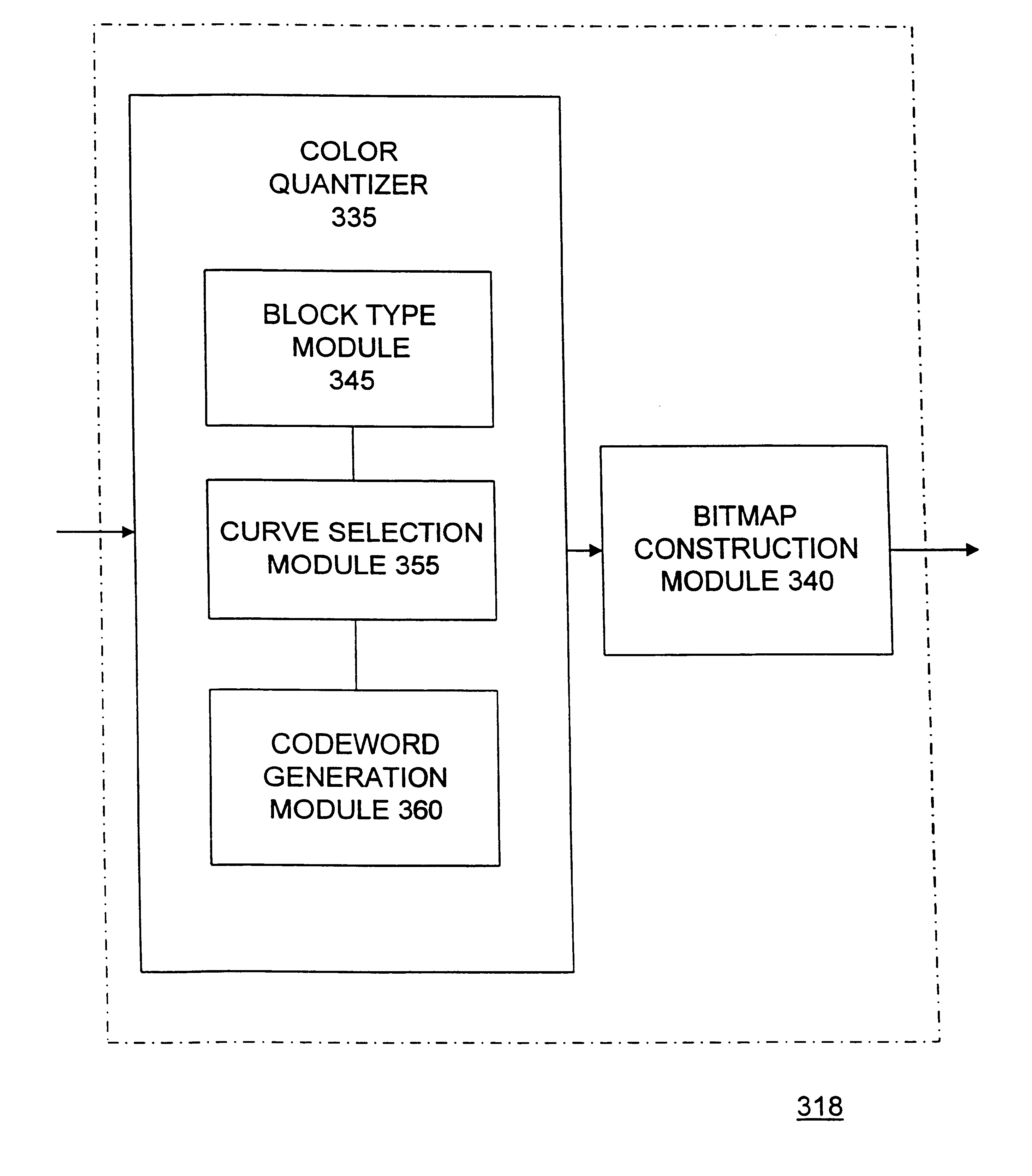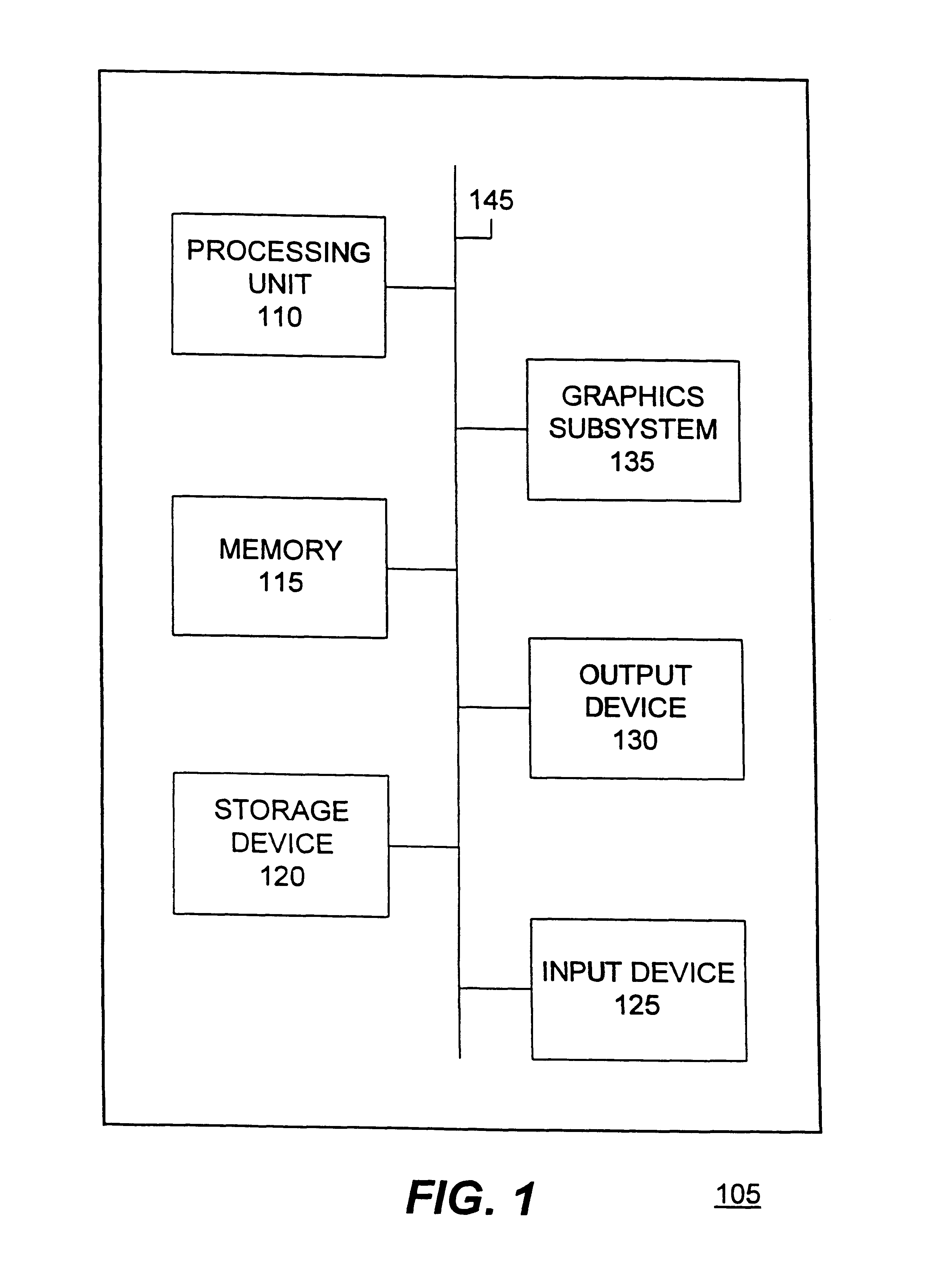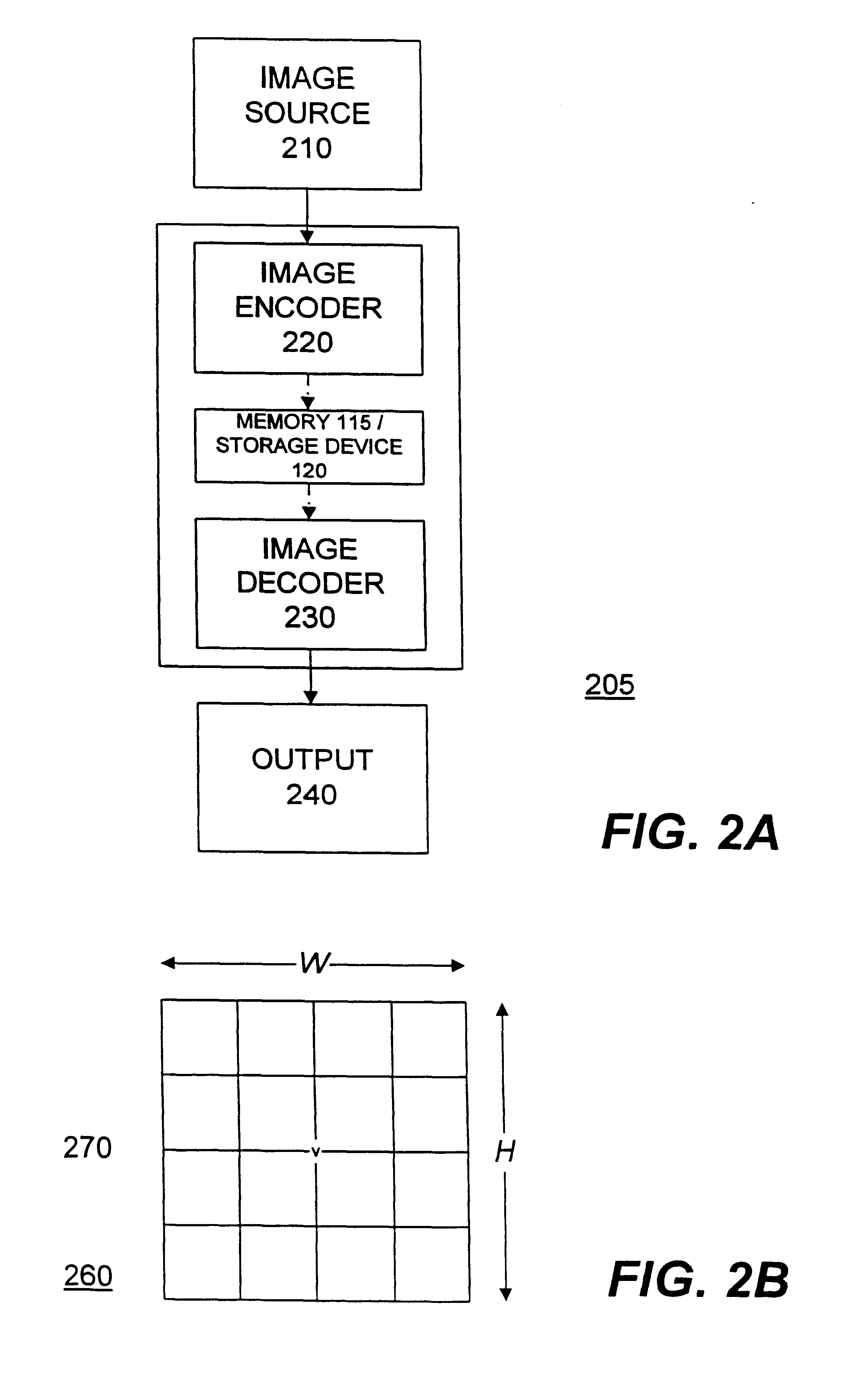Fixed-rate block-based image compression with inferred pixel values
a fixed-rate block and image compression technology, applied in the field of image processing systems, can solve the problems of not being able to randomly access any given symbol, requiring tremendous memory bandwidth and processing power, and each of these methods and systems,
- Summary
- Abstract
- Description
- Claims
- Application Information
AI Technical Summary
Problems solved by technology
Method used
Image
Examples
Embodiment Construction
decoded 615 in parallel in multiple block decoders 505a-505m, as described above. The process for decoding the encoded image blocks 390 is further described in FIG. 6B. Each decoded 615 image block is then composed 620 into a data file with the converted 612 header information by the image composer 504. The image composer 504 generates the data file as an output 625 that represents the original image 310.
FIG. 6B is a flow diagram illustrating operation of the block encoder 505 in accordance with the present invention. Once the process is started 630, each encoded image block 390 is received by the block decoder 505 and the block type for each encoded image block 390 is detected 640. Specifically, for a preferred embodiment the first and the second codewords 390a, CW0, CW1, respectively, are received 635 by the block type detector 520 of the block decoder 505. As discussed above, comparing the numerical values of CW0 and CW1 reveals the block type.
In addition, the first five bits of ...
PUM
 Login to View More
Login to View More Abstract
Description
Claims
Application Information
 Login to View More
Login to View More - R&D
- Intellectual Property
- Life Sciences
- Materials
- Tech Scout
- Unparalleled Data Quality
- Higher Quality Content
- 60% Fewer Hallucinations
Browse by: Latest US Patents, China's latest patents, Technical Efficacy Thesaurus, Application Domain, Technology Topic, Popular Technical Reports.
© 2025 PatSnap. All rights reserved.Legal|Privacy policy|Modern Slavery Act Transparency Statement|Sitemap|About US| Contact US: help@patsnap.com



